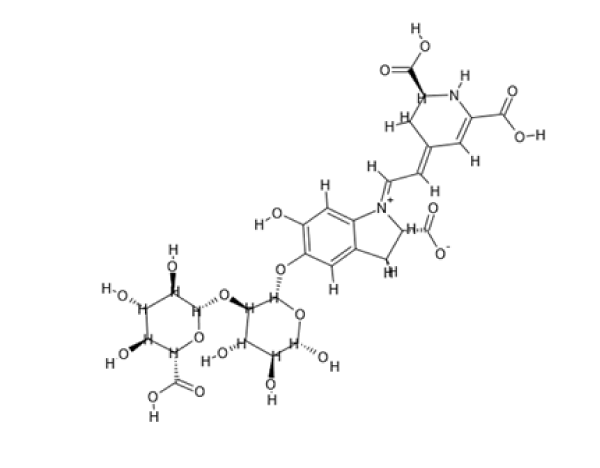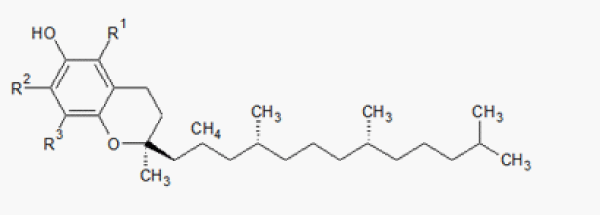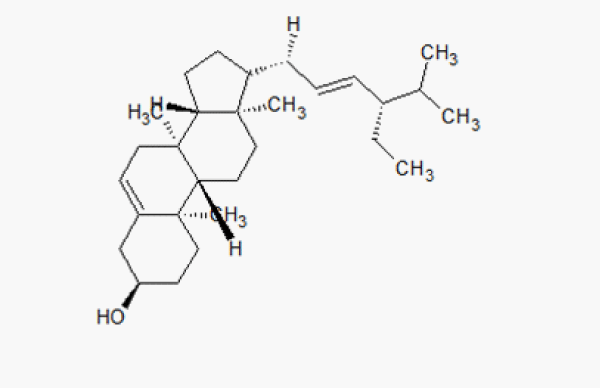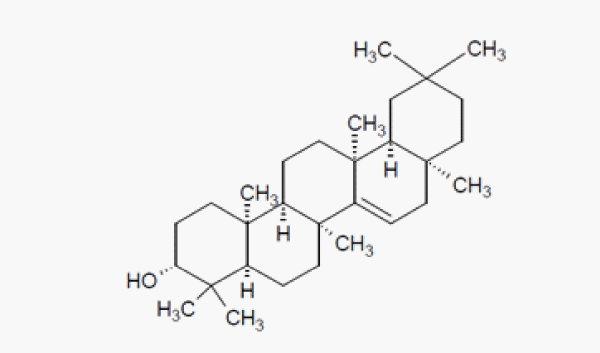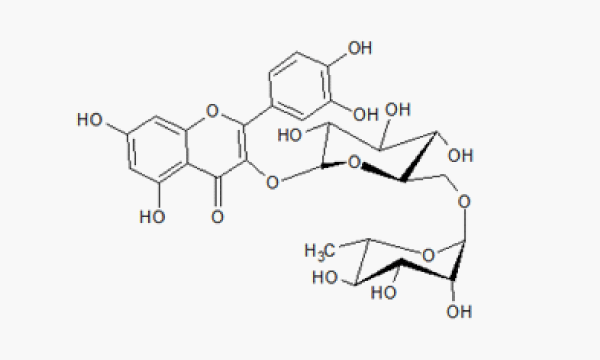
Review Article
Austin J Nutri Food Sci. 2014;2(1): 1010.
Functional Attributes of Amaranth
Priscila D. Santiago*1, Klaus Tenbergen2, Elier Vélez-Jiménez1, Maria Anaberta Cardador-Martínez1
1Tecnológico de Monterrey, Campus Querétaro, México
2Jordan College of Agricultural Sciences and Technology, University, Fresno, USA
*Corresponding author: :Priscila D. Santiago Mora, Tecnológico de Monterrey, Campus Querétaro, Epigmenio González 500; Col. San Pablo, Querétaro, Qro. 76130, México
Received: January 10, 2014; Accepted: February 10, 2014; Published: February 17, 2014
Abstract
Amaranth is a plant with high nutritional value, whose nutrients are concentrated in the leaves and the grains. The plant has compounds that showed to have many health benefits, which are mostly present in the oil extracted from the seeds. Most pronounced are: unsaturated fatty acids, lectins, tocopherols, tocotrienols, phytosterols, squalene, isoprenoid compounds, aliphatic alcohols, terpene alcohols and polyphenols, which have properties related to enhancing the immunity system, protection against cancer, prevention against oxidation, control serum lipid levels, decrease pain and inflammation. On the other hand, its components have industrial applications in the market sectors of food production (betalains and carotenoids as antioxidants and natural pigments), cosmetics (squalene) and biodegradable utensils (cellulose). Including amaranth as regular food component in the diet, whether natural or processed, will allow complementing a healthy life style.
The continuing research of the amaranth as a pseudo cereal, based on its biotechnological properties, can advance the amaranth plant from a simple pseudo cereal into an important source of nutraceuticals.
Introduction
Amaranth is a dicotyledon from the Amaranthaceae family [1]. It is cultivated mainly in the former (now Russia), China, Mexico, Guatemala, Peru, India and Kenya. The species grown for human consumption are: Amaranthus hypochondriacus L., A. cruentus L. and A. caudatus L. [2]. In Mexico, the domesticated specie is A. hypochondriacus [1] which is mainly harvested in warm regions of the States of Morelos, Puebla and Guerrero [3]. This plant offers agricultural advantages as to be resistant to drought, high temperatures and saline soils, hence its name in Greek, which translation means “unfading flower” [2,4].
It is used in human and animal products as well as forage, silage and green manure. It has potential industrial uses in cosmetology and biodegradable plastics [2].
In the past decades the study of amaranth properties has deepened. Because of its similarity with other cereals, it has been considered a pseudo cereal. Its high nutritional quality places it as a plant that can potentially contribute to the world food demand [2].
Green parts of the plant are rich in protein, minerals (potassium, iron, magnesium and calcium) and vitamins (A and C). Its leaves are also consumed in a diet; by their appearance, texture and nutritional quality, are comparable to spinach [5].
The protein content of the amaranth grain ranges between 13 and 19 % [2], which is qualified as high nutritional value [4] due to its composition (Table 2).
This nutritional value is very balanced and close to the optimum required in the human diet, as described by the World Health Organization (WHO) and Food and Agriculture Organization of the United Nations (FAO). The amount of lysine is two to three times higher than wheat, rice and maize; the concentration of sulfur amino acids is greater than legumes, which makes it an important and inexpensive source of protein [5]. Its tryptophan content is also satisfactory, but it is deficient in leucine [6].
Amaranth represents a foodstuff with high calorie content, since it has 1.5 – 3 times more oil than other grains [2]. Its starch content is close to other important cereals [5].
In addition for its nutritive value as part of human consumption, amaranth has molecules that have health benefits, such as:
- Lectins are widely used in immunology, cell biology and cancer research because it possess biological effects such as immunosuppression, mitogenicity and cytotoxicity [5]. A. hypochondriacus lectins are reported as having positive mitogenic activity tested in mouse spleen lymphocytes, while negative activity was reported in A. caudatus in hog lymphocytes [5]. Citotoxicity was also reported as positive activity for A. caudatus, while for A. hypochondriacus resulted in negative results [5]. Amaranthin (figure 1) is an example of such lectins found in different varieties from Amarathaceae. As reported by Lehmann [8], researchers have found amaranthin as a staining material for colon cancer and premalignant tumors on human colon, making it a useful tool used as a supplement for colonoscopy. In the variety A. caudatus, Rinderle and others [9] reported amaranthin levels of 3.7 % (1.6– 1.7 mg⁄g of seed) of the total PBS–extractable protein from the seed meal.
- Unsaturated fatty acids: linoleic acid (ω6), shown in figure 2, is the most predominant in its leaves [5,6] and its seed oil (corresponds to 38.2%), followed by oleic acid (ω9; 33.3%) and has a small amount of linolenic acid (ω3, 1%) [10]. It has antioxidant power and contributes to lipids metabolism. Amaranth grain and oil have been reported to have antioxidative effect on streptozotocin–induced diabetic rats [11]; grains and oils used as supplements may be beneficial for correcting hyperglycemia as part of an antioxidant therapy. These author also concludes on positive effects on the peroxidation of lipids–antioxidant protection as when enriching the food ration with 3, 6, 12 and 18 g of amaranth oil per day.
- Carotenoids like lutein, β–carotene (figure 3) and other 13 are located in the leaves [5]. Each gram of amaranth oil extracted from A. hybridus L. contents 5 µg of carotenoids [11]. They are antioxidants, anticarcinogenic agents, immune response enhancer, and eye protector and prevents cardiovascular diseases.
- Tocopherols and tocotrienols present in the seed which have antitumor activity, antioxidant activity (α–tocopherol), supression in the synthesis of cholesterol, serum cholesterol regulatory–levels [12] reduces the synthesis of low density lipoproteins–cholesterol and regulates the enzyme lipoprotein lipase [10,13]. Tocopherols (counterparts of vitamin E) in A. cruentus oil are: α–tocopherol present in 248 ppm, β–tocopherol, in 546 ppm and δ–tocopherol, in 8 ppm [10]. Tocotrienols reported in A. cruentus L. and A. hypochondriacus L. seeds are: β–tocotrienol (5.92–11.47 mg⁄kg seed) and ?–tocotrienol (0.95–8.69 mg⁄kg seed), and δ–tocotrienol (0.01–0.42 mg⁄kg seed) only found in A. cruentus [14]. Tocopherol and tocotrienol molecules are shown in figure 4 and 5, respectively. Hood [15] reported a patent from 1993 with the addition of eight vitamin E isomers in amaranth oil (desmethyl–tocotrienol and didesmethyl–tocotrienol) containing potent cholesterol inhibitors tested in chickens, which have a similar cholesterol pathway as humans. Serum total cholesterol and LDL–cholesterol were lowered by 10–30 % and 70% respectively. Their results indicate the importance of the processing method as well as the variety for assessing hypocholesterolemic activities of amaranth grains and oils.
- Squalene, shown in figure 6, (present in 4.16 g⁄ kg of seed) is a precursor of steroids and terpenoids [10]. Immune adjuvant (present in antivirals emulsions and vaccines), related to the cholesterol biosynthesis, lowers the levels of low–density cholesterol, promotes the increase of 7α–hydroxylase that breaks the hepatic cholesterol into bile acids [10,13]. Along with its hydrogenated product (squalene), used in pharmacy and cosmetic preparations for treating skin disorders due to its emollient and moisturizing activity, as well as antitiredness and anti–aging agents. Research conducted on mice has resulted in increases in cellular and non–specific immune functions in a dose–dependent manner as reported by Martirosyan and others [11]; there is also experimental evidence that only 10 % of the squalene dosage is used in cholesterol synthesis.
- Phytosterols are present in high concentration [16]. Martirosyan and others [11] reported 20 mg⁄g A. hybridus oil; while León–Camacho and others [10] reported the following concentration (%) for A. cruentus L. phytosterols: 24– metilencholesterol (0.3), campesterol (1.6), stigmasterol (0.9), Δ7–campesterol (24.8), clerosterol (42.0), β–sitosterol (1.3), Δ5– avenasterol (2.0), Δ7–sigmastenol (15.2), Δ5–avenasterol (11.9); and traces of cholesterol, bassicasterol, campestanol, Δ5,23–sigmastadienol, sitostanol, Δ5,24–stigmastadienol. Twenty percent are in its free form and the rest are esterified with fatty acids. They are the most important compounds of the micro components and comprise the largest portion of the unsaponificable matter. They have wide use in pharmacy due to its anti–inflammatory, analgesic, antibacterial (clerosterol) properties and as reactive (stigmasterol and sitosterol, respectively shown in figures 7 and 8) of semi synthesis for steroid drug performance [10]. The anti–inflammatory activity of the petroleum ether and ethanolic extracts from A. spinosus Linn has been tested on rats by the carrageenan induced paw odema [17]. The analgesic activity has been tested with the A. spinosus Linn methanolic extract on mice abdominal contractions that were induced with glacial acetic acid [18].
- Aliphatic alcohols, methylsterols and terpenic alcohols from A. cruentus L. oil were found in the following concentrations [10]:
- Polyphenols found in A. hypochondriacus seed flour [19] have shown antioxidant capacity; some of them are: rutin, shown in figure 12, (4.0–10.1 µg⁄g), nicotiflorin (4.8–7.2 µg⁄g) and isoquercitrin (0.3–0.5 µg⁄g). The antioxidative capacity and antioxidant activity of polyphenols in amaranth has been measured using ESR spectroscopy after running the DPPH assay [20]. Yadav and others [21] determined the same antioxidant properties for the methanol extract of A. tricolor dried leaves by CUPRAC and FRAP assays, respectively.
- Lunasin is a bioactive peptide (sequence PCEKHITIRAF) located in the seed. It is on concentration of 11.1 µg⁄ g of extracted protein. Silva–Sánchez and others [22] researched on the anticarcinogenic properties of lunasin on the A. hypochondriacus seed. The glutelin fraction contains the highest amount (3 µg⁄g), but is also found in albumin, prolamin and globulin. Its anticarcinogenic property has been studied by inducing apoptosis against HeLa cells using the glutelin extract (from A. hypochondriacus) digested with trypsin [22]. Maldonado–Cervantes and others [23] showed that, in vitro, it inhibits the transformation of NIH–3T3 cells to cancerous nodules.
- Kigel J (1994) Development and ecophysiology of Amaranths. In:(Paredes-Lopez O), Amaranth: Biology, chemistry, and technology, p. 39-73. CRC Press.
- Lozoya-Gloria E (1994) Biotechnology for an ancient crop: amaranth. In: (Paredes-Lopez O), Amaranth biology, chemistry and technology, p. 1-7. CRC Press.
- Espitia-Rangel E (1994) Breeding of grain amaranth. In: (Paredes-Lopez O), Amaranth. Biology, chemistry and technology. p. 23-38. Boca Raton, USA: CRC Press.
- Bale JR, Kauffman CS (1992) Special Issue: Grain Amaranth: New Potential for an Old Crop- Editors Overview. Food Reviews International 8(1):1-4.
- Segura-Nieto M, Barba De La Rosa A, Paredes-López O. (1994) Biochemistry of amaranth proteins. In: (Paredes-Lopez O). Amaranth Biology, Chemistry and Technology. p. 75-106. Boca Raton, FL: CRC Press.
- Morales E, Lembcke J, Graham GG . Nutritional value for young children of grain amaranth and maize-amaranth mixtures: effect of processing. J Nutr. 1988; 118: 78-85.
- Kalinowski LS, Navarro JP, Concha AIR, Hermoza GC, Pacheco RA, et al. Grain amaranth research in Peru. Food Reviews International. 1992; 8: 87-124.
- Lehmann JW. Anti-nutritional factors in amaranth grain. Legacy: The Official Newsletter of the Amaranth Institute. 1992; 5: 6-9.
- Rinderle SJ, Goldstein IJ, Matta KL, Ratcliffe RM . Isolation and characterization of amaranthin, a lectin present in the seeds of Amaranthus caudatus, that recognizes the T- (or cryptic T)-antigen. J Biol Chem. 1989; 264: 16123-16131.
- León-Camacho M, García-González DL, Aparicio R. A detailed and comprehensive study of amaranth (Amaranthus cruentus L.) oil fatty profile. European Food Research and Technology. 2001; 213: 349-355.
- Martirosyan DM, Miroshnichenko LA, Kulakova SN, Pogojeva AV, Zoloedov VI . Amaranth oil application for coronary heart disease and hypertension. Lipids Health Dis. 2007; 6: 1.
- Schnetzler K, Breene W (1994) Food uses and amaranth product research: a comprehensive review. In: (Paredes-Lopez O), Amaranth Biology, Chemistry and Technology. p. 155-84. Boca Raton, FL: CRC Press.
- Qureshi AA, Lehmann JW, Peterson DM . Amaranth and its oil inhibit cholesterol biosynthesis in 6-week-old female chickens. J Nutr. 1996; 126: 1972-1978.
- Lehmann JW, Putnam DH, Qureshi AA. Vitamin E isomers in grain amaranths (Amaranthus spp.). Lipids; 1994; 29:177-181.
- Hood RL (1998) Tocotrienols in Metabolism. In: Bidlack, editor. Phytochemicals: a new paradigm: p. 33-47. CRC Press.
- Marcone MF, Kakuda Y, Yada RY . Amaranth as a rich dietary source of beta-sitosterol and other phytosterols. Plant Foods Hum Nutr. 2003; 58: 207-211.
- Baral M, Chakraborty S, Chakraborty P. Evaluation of anthelmintic and anti-inflammatory activity of Amaranthus spinosus Linn. Int. J. Curr. Pharm. 2010; 2: 44-47.
- Rajesh V, Perumal P. Evaluation of analgesic activity of Amaranthus spinosus Linn. Leaves in mice. Journal of Pharmacy Research. 2010; 3: 3088-3089.
- Barba de la Rosa A, Fomsgaard IS, Laursen B, Mortensen AG, Olvera-Martínez L, et al. Amaranth (Amaranthus hypochondriacus) as an alternative crop for sustainable food production: Phenolic acids and flavonoids with potential impact on its nutraceutical quality. Journal of Cereal Science 2009; 49: 117-121.
- Schoenlechner R, Siebenhandl S, Berghofer E (2011) Pseudocereals. In: (Arendt E, Dal Bello F) Gluten-free cereal products and beverages: p. 149-191. Access Online via Elsevier.
- Yadav R, Kalia P, Kumar R, Jain V. Antioxidant and Nutritional Activity Studies of Green Leafy Vegetables. International Journal of Agriculture and Food Science Technology. 2013; 4: 707-712.
- Silva-Sánchez C, de la Rosa AP, León-Galván MF, de Lumen BO, de León-Rodríguez A . Bioactive peptides in amaranth (Amaranthus hypochondriacus) seed. J Agric Food Chem. 2008; 56: 1233-1240.
- Maldonado-Cervantes E, Jeong HJ, León-Galván F, Barrera-Pacheco A, De León-Rodríguez A . Amaranth lunasin-like peptide internalizes into the cell nucleus and inhibits chemical carcinogen-induced transformation of NIH-3T3 cells. Peptides. 2010; 31: 1635-1642.
- Cai Y, Sun M, Corke H . Antioxidant activity of betalains from plants of the amaranthaceae. J Agric Food Chem. 2003; 51: 2288-2294.
- Kanner J, Harel S, Granit R . Betalains--a new class of dietary cationized antioxidants. J Agric Food Chem. 2001; 49: 5178-5185.
- Hu Q, Hu Y, Xu J. Free radical-scavenging activity of Aloe vera (Aloe barbadensis Miller) extracts by supercritical carbon dioxide extraction. Food chemistry. 2005; 91: 85-90.
- Solomon A, Golubowicz S, Yablowicz Z, Grossman S, Bergman M . Antioxidant activities and anthocyanin content of fresh fruits of common fig (Ficus carica L.). J Agric Food Chem. 2006; 54: 7717-7723.
- Tesoriere L, Allegra M, Butera D, Livrea MA . Absorption, excretion, and distribution of dietary antioxidant betalains in LDLs: potential health effects of betalains in humans. Am J Clin Nutr. 2004; 80: 941-945.
- Stintzing FC, Carle R. Betalains-emerging prospects for food scientists. Trends in Food Science & Technology. 2007; 18: 514-525.
- Azeredo H. Betalains: properties, sources, applications, and stability- a review. International Journal of Food Science & Technology. 2009; 44 :2365-2376.
- Delgado-Vargas F, Jiménez AR, Paredes-López O . Natural pigments: carotenoids, anthocyanins, and betalains--characteristics, biosynthesis, processing, and stability. Crit Rev Food Sci Nutr. 2000; 40: 173-289.
- Stintzing FC, Kammerer D, Schieber A, Adama H, Nacoulma OG . Betacyanins and phenolic compounds from Amaranthus spinosus L. and Boerhavia erecta L. Z Naturforsch C. 2004; 59: 1-8.
- Strack D, Vogt T, Schliemann W . Recent advances in betalain research. Phytochemistry. 2003; 62: 247-269.
- Moβhammer MR, Stintzing FC, Carle R. Development of a process for the production of a betalain-based colouring foodstuff from cactus pear. Innovative Food Science & Emerging Technologies. 2005; 6: 221-231.
- Cai Y, Sun M, Corke H . HPLC characterization of betalains from plants in the amaranthaceae. J Chromatogr Sci. 2005; 43: 454-460.
- Palombini SV, Claus T, Maruyama SA, Gohara AK, Souza AHP, et al. Evaluation of nutritional compounds in new amaranth and quinoa cultivars. Food Science and Technology (Campinas). 2013; 33: 339-344.
Figure 1: Amaranthin
Figure 2: Linoleic acid
Figure 3: B-carotene
Figure 4: Tocopherol
Figure 5: Tocotrienol
Figure 6: Squalene
Figure 7: Stigmasterol
Figure 8: Sitosterol
Total aliphatic alcohols: Docosanol (521 ppm), tetracosanol (48 ppm), hexacosanol (60 ppm) and octacosanol (152 ppm).
Methylsterols: Taraxerol (348.7 ppm) and 24–methylenecycloartanol (446.7 ppm).
Terpenic alcohols: Dammaradienol (189.0 ppm), β–amyrin (213.8 ppm), gramisterol (499.0 ppm), cycloartenol (401.8 ppm) and citrostadienol (320.5 ppm). Docosanol, taraxerol, and dammaradienol are shown respectively in figures 9, 10 and 11.
Figure 9: Aliphatic alcohol: docosanol
Figure 10: Methylsterol: taraxerol
Figure 11: Terpenic alcohol: dammaradienol
Figure 12: Rutin
Figure 13: Betacyanin
Figure 14: Betaxanthin
Amaranth seeds and leaves also contain anti– nutritional and toxic factors like large amounts of oxalates (which limit the availability of nutrients), nitrates and saponins [5].
In the food industry, the amaranth is processed as food or used as an ingredient in prepared products (breads, cereals, crackers, granola, etc.) [12]. Although the use of its seeds has been limited by the content of saponins and phenolic compounds give unpleasant bitter flavors [6].
The seeds have colors ranging from pale yellow to black (due to its protein content), gold, coffee and pink [5,6,8]. Betalains are present in leaves pigment [12]. The different patterns of pigmentation of the amaranth contributes to many practical and aesthetic uses, [1] when correctly extracted, allowing it to be used as a natural dye [12].
Amaranth Betalains
The natural pigments, in addition to being used as dyes, also have antioxidant, anti–inflammatory, antibacterial, and anti–cancerogenic properties. It has been found to reduce the risk of cardiovascular disease and other diseases related to ageing [24,25]. It has been shown that betalains of beet, in low concentrations, inhibit lipid peroxidation; the same antioxidant effect was observed with betalains of prickly pear, the anthocyanins of fig and aloe extracts [26,27,28].
Betalains are water–soluble pigments that contain nitrogen. Betalamic acid is its predecessor [29]; they are synthesized from the amino acid tyrosine into two structural groups: the betacyanins, composed of red–violet color, and the betaxanthines, yellow–orange. The betacyanins contain a residue cycle–3, 4–dihydroxyphenylalanine (cycle – Dopa) that extends the resonance of the aromatic diphenolic ring and change the maximum of 480 nm (betaxanthines) absorbance to 540 nm (betacyanins) [30]. Different substitutions or glucosilations [31] of the sulfate (the betacyanins aglycone) resulting in the formation of different betacyanins, which in turn have a change hypsocromic of 6 nm in the UV range maximum absorbance [32]. The betaxanthines, on the other hand have changes in their chains of amino and these modifications have a lower maximum absorbance than their counterparts (barochromic effect) [33].
For its extraction, plant tissue is macerated. Pigments can be extracted with water, but solutions of methanol or ethanol achieved a complete extraction [31]. A means of extraction slightly acidified promotes the stability of the betacyanins and avoids oxidation caused by the polyphenoloxidases [33]. An enzymatic method for degradation of hydrocolloids in the material, also favors the extraction of this pigment [34].
Extract purification is done while stirring it with water and filtering it to a vacuum. Using a fraction with ethyl acetate extraction, will separated the phenolic compounds of betalains. The aqueous fraction contains betalains, while the organic contains the rest of the phenolic. Betalains were adjusted to a pH of 6 with aqueous ammonium and concentrated solution to be analyzed in the HPLC–MS [32].
Of the 70 betalain structures identified (50 betacyanins and 20 betaxanthines), 16 betacyanins and 3 betaxanthines are present in the family Amaranthaceae [35]. In a comparative study of the beet betalains versus the amaranth, it was concluded that the presence of the following betacyanins are present: amaranthine, isoamaranthine, betanin and isobetanin, the first two being the most predominant [32]. The structure of the molecules of betalains found in the family Amaranthaceae can be seen in figure 1.
ABTS and DPPH are laboratory tests used to evaluate the power of betalains as free radical scavengers. Studies have shown that its antioxidant activity is very diverse in the different molecules [24], which compares various betalains and other antioxidants (table 1). EC50 is a widely used parameter to express and compare antioxidative power in certain molecules.
Conclusion
Compound
EC50 (μM)
Source
Amaranthine
8.37
A. tricolor
Isoamaranthine
8.35
A. tricolor
Iresinine
8.08
I. herbstii
Celosianin
7.13
C. cristata
Betanin
4.88
B. vulgaris
Isobetanin
4.89
B. vulgaris
Gompherin
3.35
G. globosa
Acylated Gompherin
4.11
G. globosa
3-metoxitiramin-betaxanthin
4.08
C. plumose
(S)-tryptophan-betaxanthin
4.21
C. plumose
Ascorbic acid
13.93
BDH
Rutin
6.11
Sigma
Catechin
7.24
Sigma
Ferulic acid
19.35
Sigma
Table 1: Scientific name, common name and sources of mushroom samples.
Amino acid
Content (mg/g)
Alanine
5.3
Arginine
14.7
Aspartic acid
12.2
Glycine
13.8
Isoleucine
5.5
Leucine
8.6
Glutamic acid
25.1
Lysine
8.3
Cystine
1.9
Methionine
3.4
Phenylalanyne
6.1
Tyrosine
5.4
Threonine
4.3
Proline
6.9
Valine
6.0
Histidine
3.8
Serine
8.8
Table 2: Antioxidant activities of mushroom samples extracted by different solvents.
Amaranth has nutritional and functional attributes that characterize the pseudo cereal as a possible source to meet basic needs in a diet and health maintenance. The pharmacological properties of its compounds are related to anticarcinogenic, antioxidant and immunological activities as well as lowering cholesterol. Their pigments (betalains and carotenoids), as well as dyes, can be removed and used as natural antioxidants in the food and cosmetic industry. The ease of cultivation places amaranth on the forefront of agriculture and it could play an important role in combating hunger throughout the world, while assisting to reduce degenerative diseases.
References
